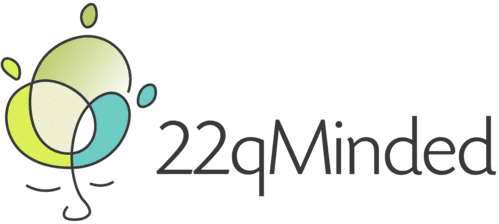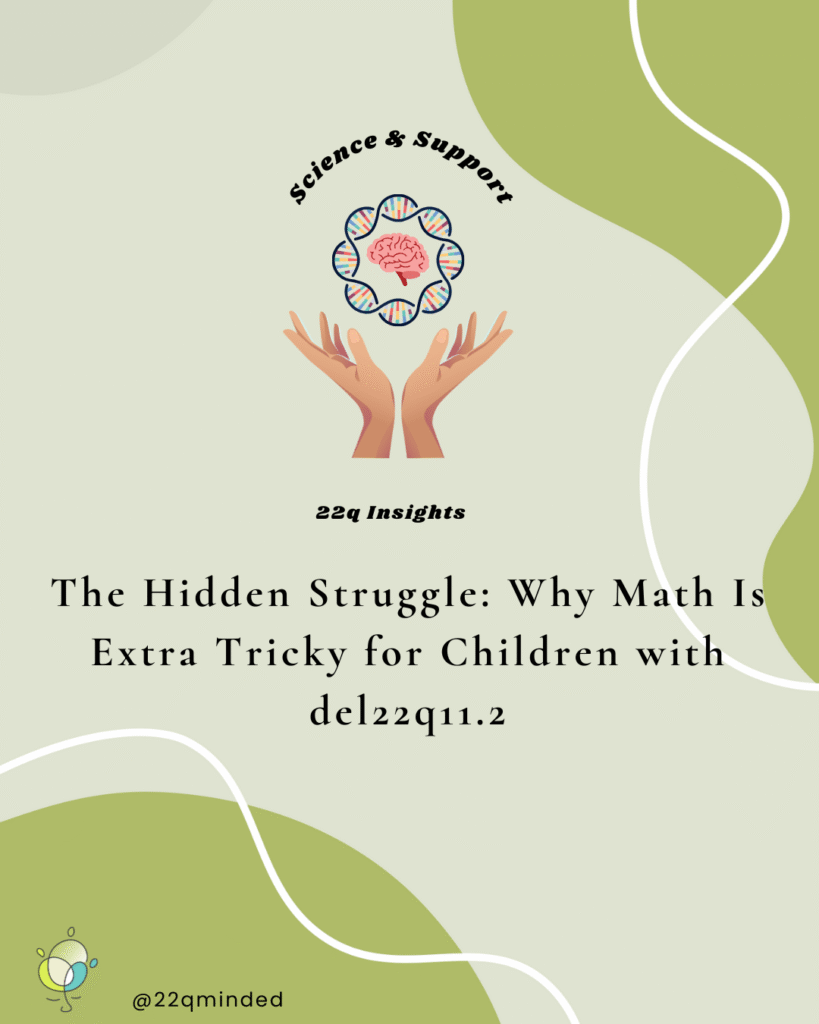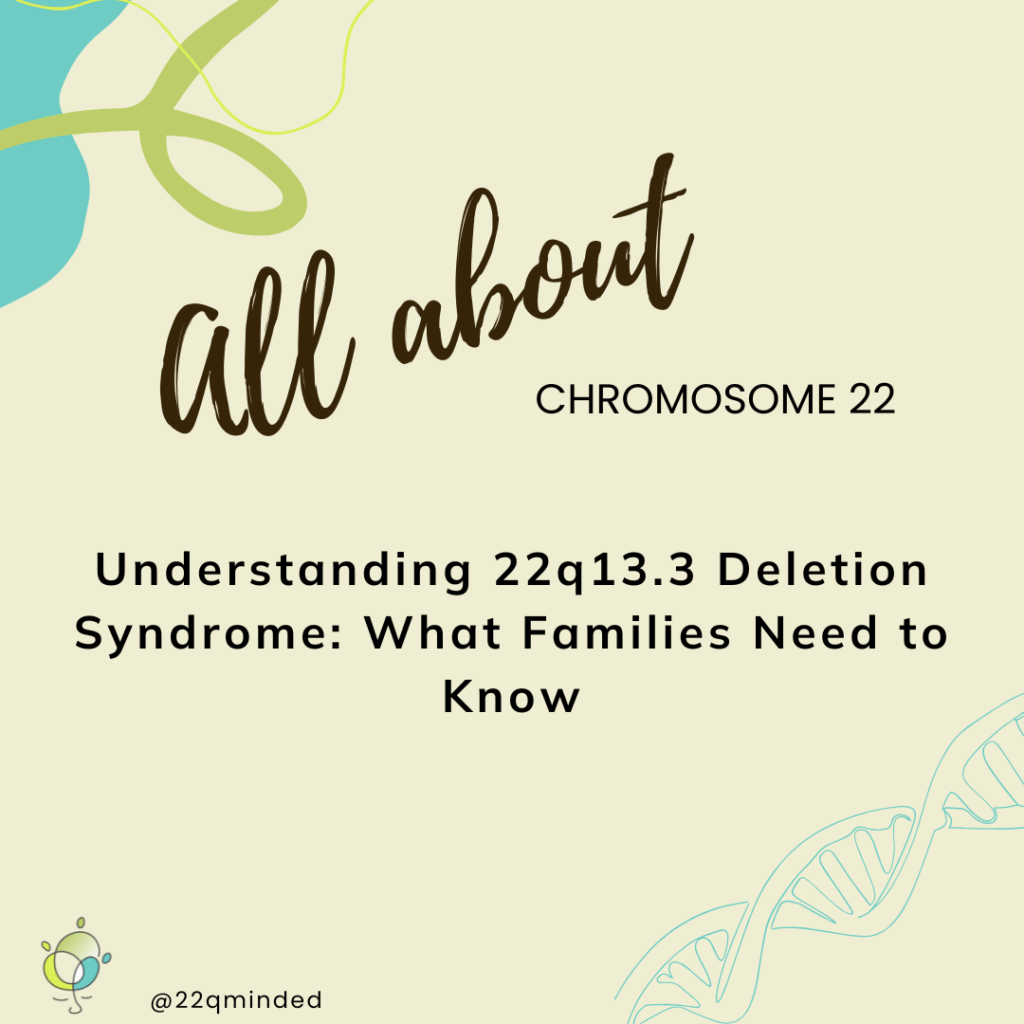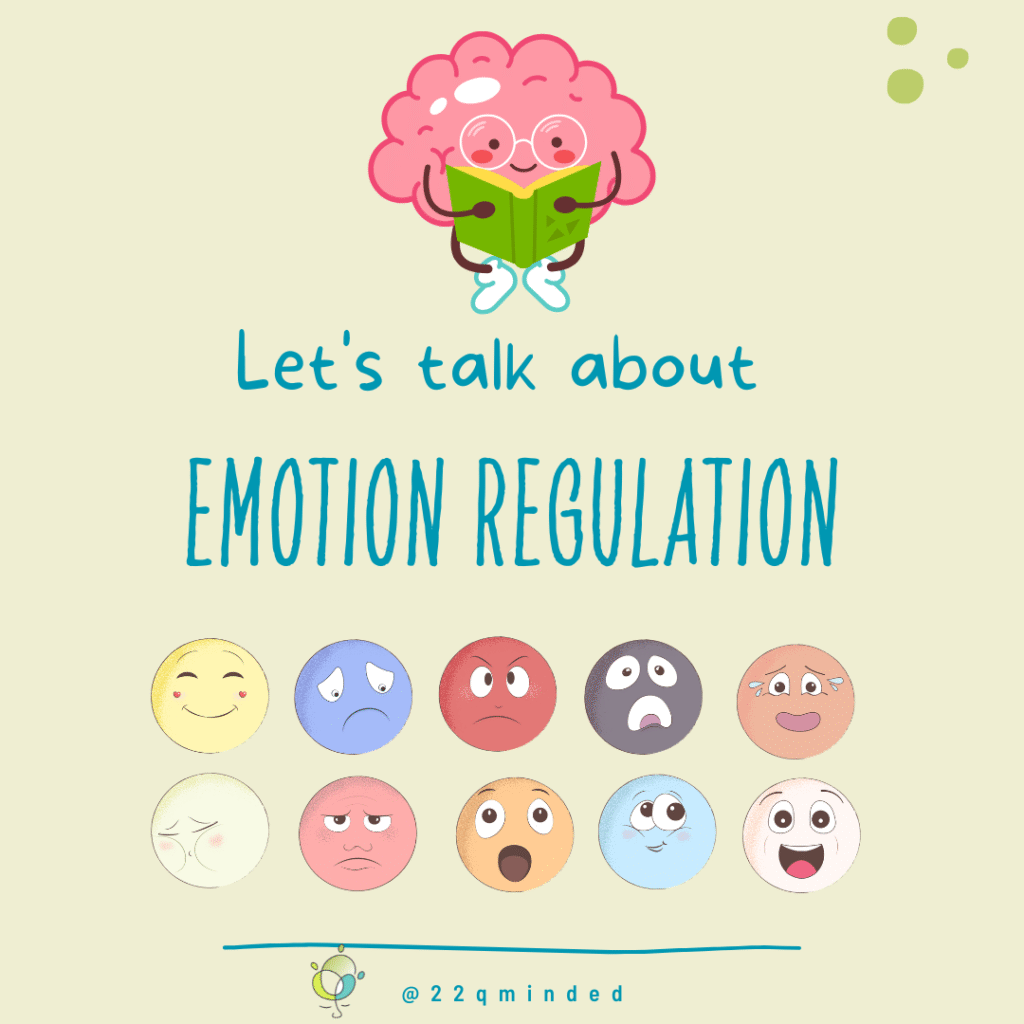Math difficulties can be one of the earliest and most persistent challenges for children with 22q-related conditions. While your child might be strong in reading or verbal communication, they may struggle with basic number concepts, arithmetic, or spatial reasoning. These difficulties are not simply about disinterest in math, they are rooted in the brain’s development and cognitive profile associated with the syndrome.
Parenting a child with a genetic condition like 22q-related conditions can feel like solving a puzzle without all the pieces. You may notice your child struggling with things that seem simple for their peers, like telling time, solving basic maths problems, or understanding quantities. These challenges can feel confusing, especially when your child is bright in other areas like reading or conversation.
If you’re feeling unsure or overwhelmed, you’re not alone.
Many families of children with 22q-related conditions walk this same path, searching for answers and support. One area that often raises concern, but doesn’t always get enough attention, is mathematics. As math-related research is largely limited to 22q11.2 deletion syndrome, the current blog will focus on this syndrome.
This blog aims to shine a light on why maths can be uniquely challenging for children with 22q11.2DS, how these challenges show up in everyday life, and—most importantly—what parents and professionals can do to help.
Understanding the Behavioural Phenotype
Children with 22q11.2DS frequently experience what is classified as a Specific Learning Disorder in Mathematics (also referred to as mathematical learning disability or dyscalculia). As highlighted by De Smedt et al. (2009), these difficulties are disproportionate compared to their relative strengths in reading and verbal abilities. Most notably, while fact retrieval is often preserved, children with 22q struggle significantly with procedural calculations, word problem solving, and understanding numerical quantities.
The Role of Visuospatial and Working Memory Skills
One of the key cognitive features underlying Specific Learning Disorder in Mathematics in 22q is a weakness in visuospatial processing and working memory. Studies by Attout et al. (2017) and Simon et al. (2008) found that individuals with 22q show impairments in tasks requiring visuospatial magnitude comparison (e.g., comparing lengths or dot arrays), but not in tasks that use auditory modalities or low spatial demand. This suggests that visuospatial deficits, not numerical reasoning alone, are at the core of many math challenges.
Similarly, Favre et al. (2024) demonstrated that while children with 22q responded at similar speeds to neurotypical peers on magnitude comparison tasks, their accuracy was lower—regardless of whether the task had high or low visuospatial load. Interestingly, their performance in these tasks did not strongly correlate with arithmetic outcomes, but working memory did. This points to the vital role of cognitive processes beyond number sense.
Developmental vs. Atypical Pathways
A 2023 study by Cornu et al. in Frontiers in Psychology emphasises that many children with developmental dyscalculia show a ‘delayed’ trajectory in acquiring basic numerical skills, rather than an entirely atypical path. This insight is meaningful for families and professionals supporting children with 22q, as it suggests that with sustained, targeted support, these learners can continue developing foundational math skills over time. Interventions should focus on strengthening early number concepts—such as magnitude comparison and symbolic number mapping—before progressing to abstract calculations.
Simon’s Spatiotemporal Hypergranularity Hypothesis
Tony Simon (2008) proposed a comprehensive model to explain the foundational challenges in 22q: “spatiotemporal hypergranularity.” According to this theory, children with 22q have a reduced resolution in their mental representations of space and time, due to early developmental differences in neural circuits. This reduced resolution, think of it like a pixelated image, makes it harder for the brain to process numerical information that relies on precise spatial and temporal judgments.
Additional support for this comes from Simon et al. (2008), who found that children with 22q and Turner Syndrome shared specific impairments in tasks like magnitude comparison and enumeration. These impairments stemmed not from overall IQ differences but from foundational difficulties in visuospatial attention and spatial working memory—reinforcing the idea that math challenges in 22q are specific and brain-based.
Symbolic vs. Non-Symbolic Number Processing
Research also shows that children with 22q struggle more with non-symbolic number processing, like estimating or comparing groups of dots, than with symbolic tasks like reading numbers aloud (Oliveira et al., 2014). However, even symbolic tasks become difficult when they require deeper conceptual understanding, such as place value or carrying in multi-digit operations.
Moss et al. (1999) further reinforce this profile, showing that children with 22q typically have stronger verbal IQs than performance IQs, and their reading and spelling scores often exceed their math scores. This cognitive profile, sometimes resembling nonverbal learning disorder, calls for targeted educational planning that addresses both verbal strengths and visuospatial weaknesses.
Practical Strategies for Supporting Math Learning
Understanding the nature of these difficulties allows families, educators, and clinicians to support math learning in more targeted and compassionate ways. Here are some research-informed, neuroaffirming strategies:
1. Use Visual Aids Thoughtfully
- Provide clear, structured visual supports like number lines, place value charts, or colour-coded steps for multi-digit calculations.
- Reduce unnecessary visual clutter to support focus and reduce cognitive load.
2. Scaffold Working Memory
- Break tasks into manageable steps.
- Use written checklists, visual cue cards, or verbal reminders.
- Allow extended time and frequent breaks.
- Make tasks practical and relevant.
3. Leverage Verbal Strengths
- Use stories, verbal mnemonics, and step-by-step oral explanations to teach math concepts.
- Encourage students to talk through problems as they work.
4. Build on Estimation and Approximate Number Skills
- Practice estimating quantities in real-life contexts (e.g., cooking, shopping)
- Use games that strengthen number sense without pressure for exact answers.
5. Provide Emotional Support
- Celebrate small wins and effort.
- Address math anxiety with reassurance and positive reinforcement.
- Normalise mistakes as part of learning.
- Use special interests to make learning more engaging
As highlighted in a 2024 report from OBM Genetics, “Many families expressed frustration that their child’s math struggles were misunderstood or dismissed as laziness. Recognizing these challenges as part of the cognitive profile of 22q11.2DS helps to shift the narrative toward compassion and support. (Bisschoff & Vorster, 2024)”
Conclusion
For children with 22q11.2 Deletion Syndrome, math challenges are real, complex, and rooted in neurodevelopmental differences, not a lack of intelligence or effort. By understanding the cognitive profile behind Specific Learning Disorder in Mathematics in 22q, we can offer more meaningful, respectful, and effective support. Through thoughtful strategies and compassionate teaching, we can help every learner with 22q discover their own path to success in math.
There are some excellent resources available to learn more about how to support learning if you visit support group pages, such as the 22q Family Foundation, 22qFoundation Australia and New Zealand, 22qIreland, MaxAppeal and others. Donna Cutler-Landsman has authored a book about how to support learning.
Want more evidence-informed support for navigating learning and life with 22q? Visit www.22qminded.com to learn more about our live and on-demand webinars and courses, join our online community, or sign up for our newsletter. Together, we can create a world that understands and empowers every person with 22q.




